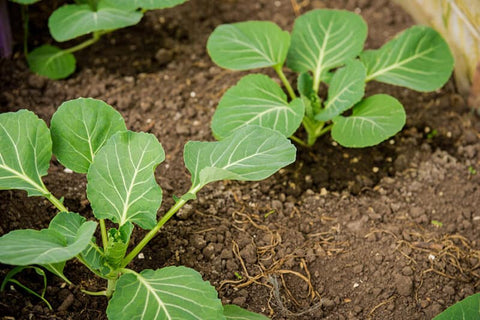Mesclun mixes offer a delightful array of flavors, textures, and colors that can transform any ordinary salad into a gourmet culinary experience. From spicy arugula to tender mizuna and crisp lettuce, mesclun mixes allow you to harvest a diverse selection of salad greens right from your own backyard. In this blog, we'll explore the varieties of mesclun you can choose from and provide tips on how to grow these delectable greens in your garden.The following content also has some reference value for raised garden beds.

Varieties of Mesclun
Mesclun mixes typically consist of a blend of young, tender salad greens, each contributing its unique flavor profile and nutritional benefits. Here are some popular varieties of mesclun greens to consider for your mix:
1. Lettuces
Include a mix of lettuce varieties such as butterhead, romaine, and leaf lettuce for a base of tender, mild-flavored greens. Lettuces add volume and bulk to your mesclun mix while providing a neutral backdrop for other more assertive flavors.
2. Arugula
Known for its peppery, slightly bitter taste, arugula adds a bold kick to mesclun mixes. The dark green leaves of arugula are packed with vitamins and minerals, making it a nutritious addition to your salad bowl.
3. Spinach
Spinach is prized for its tender texture and mild, slightly sweet flavor. Rich in iron, vitamins A and C, and antioxidants, spinach adds a nutritional boost to mesclun mixes while contributing a delicate, buttery taste.
4. Mizuna
Mizuna is a Japanese mustard green with fringed, feathery leaves and a mild, slightly peppery flavor. It adds a delicate crunch and subtle spiciness to mesclun mixes, making it a favorite among salad lovers.
5. Tatsoi
Tatsoi, also known as spoon mustard or spinach mustard, forms small, compact rosettes of dark green leaves with a mild, mustard-like flavor. It adds texture and visual interest to mesclun mixes while offering a nutritious boost of vitamins and minerals.

6. Radicchio
Radicchio, with its vibrant purple leaves and slightly bitter taste, adds a pop of color and complexity to mesclun mixes. It pairs well with sweeter greens and creamy dressings, balancing out their flavors with its distinctively bitter notes.
7. Endive
Endive, with its crisp, curly leaves and mildly bitter taste, adds texture and depth to mesclun mixes. Its slightly bitter flavor profile contrasts beautifully with sweeter greens, creating a well-balanced salad experience.
Growing Mesclun Mix in Your Garden
Growing mesclun mix in your garden is relatively simple and requires minimal space and maintenance. Here's how to get started:
1. Choose a Sunny Location
Select a sunny spot in your garden that receives at least 6 to 8 hours of sunlight per day. Mesclun greens thrive in full sun but can tolerate partial shade in hotter climates.
2. Prepare the Soil
Prepare the soil by loosening it to a depth of 6 to 8 inches and removing any weeds, rocks, or debris. Incorporate a generous amount of compost or aged manure to enrich the soil and improve its texture and fertility.
3. Planting
Sow mesclun mix seeds directly into the prepared soil, either in rows or scattered across the surface. Plant the seeds thinly, as overcrowding can lead to stunted growth and increased competition for nutrients. Cover the seeds with a thin layer of soil and water gently to ensure good soil-to-seed contact.
4. Watering
Keep the soil consistently moist but not waterlogged, especially during the germination and seedling stages. Water your mesclun greens deeply and evenly, aiming to keep the soil consistently moist to encourage healthy growth and prevent wilting.
5. Thinning
Once the mesclun greens have germinated and established true leaves, thin them to the desired spacing to prevent overcrowding and promote airflow. Use scissors or garden shears to snip off excess seedlings at the soil level, leaving the strongest, healthiest plants to continue growing.
6. Harvesting
Harvest mesclun greens when they reach the desired size, typically 4 to 6 inches tall. Use scissors or garden shears to snip off the outer leaves of each plant, leaving the inner leaves to continue growing for future harvests. Harvest mesclun greens frequently to encourage continuous growth and prevent bolting.

Conclusion
Mesclun mixes offer a delightful medley of flavors, textures, and colors that can elevate any salad to new heights of culinary excellence. By choosing a diverse selection of salad greens and following simple steps to grow them in your garden, you can enjoy a continuous harvest of fresh, nutritious greens throughout the growing season. So roll up your sleeves, dig into your garden, and get ready to savor the vibrant flavors and bountiful harvests of your own homegrown mesclun mixes!









